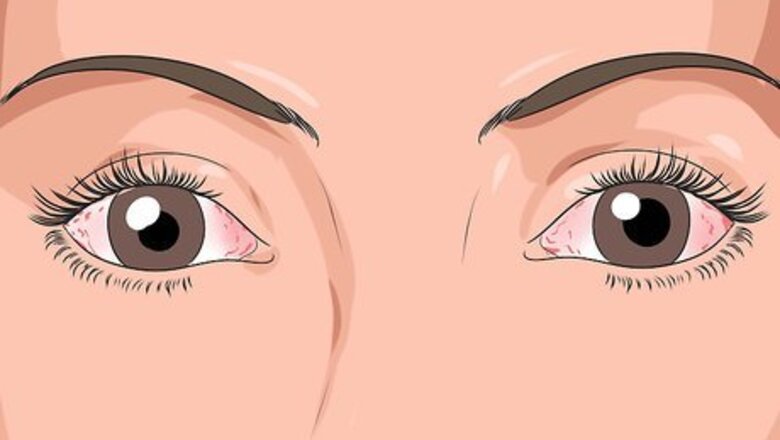
views
Understanding Pink Eye Basics
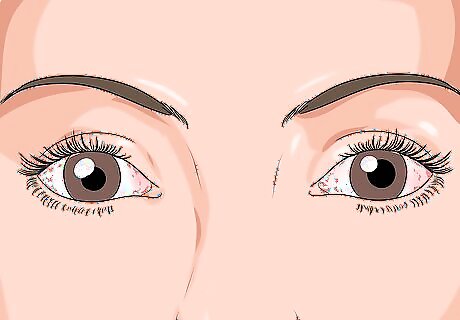
Determine which kind of pink eye you have. Conjunctivitis can occur due to viruses, bacteria, and allergies. All types of pink eye cause the eyes to become red, watery, and itchy, but the other symptoms of pink eye will vary according to its cause. Viral can affect one or both eyes, and individuals with this condition may experience sensitivity to light and watery discharge. Viral conjunctivitis is highly contagious and difficult to treat. It usually needs to run its course, which can take anywhere from 1 to 3 weeks. The best way to treat viral conjunctivitis is by preventing complications from arising. In severe cases, topical corticosteroids may be needed. Bacterial conjunctivitis causes a sticky discharge, yellow or green, located in the corner of the eye. In extreme cases, the discharge can cause the eyes to stick together. One or both eyes can be affected, and bacterial conjunctivitis is contagious. Bacterial conjunctivitis is best treated by a doctor. You might be able to overcome the illness at home, but antibiotics will significantly shorten the duration. Allergic conjunctivitis is usually accompanied by other allergy symptoms, including a stuffy or runny nose, and both eyes will be affected. It is not contagious. Allergic conjunctivitis is usually treated at home, but patients with severe allergies may need professional medical treatment to clear the condition up quickly.
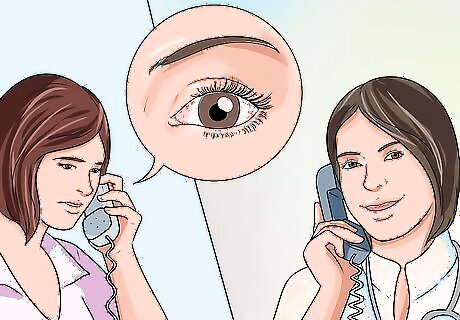
Know when to call the doctor. It never hurts to call the doctor when you have pink eye, since your doctor will have good recommendations for what to do. A call is strongly recommended if the pink eye is accompanied by more worrisome symptoms. Call the doctor if you experience moderate to severe pain in the eye or if you experience vision problems that do not clear up once the discharge is wiped away. If pink eye deepens in color to an intense red, you should seek medical help as soon as possible. Contact the doctor immediately if you suspect that you have a severe form of viral conjunctivitis, such as one caused by the herpes simplex virus, or if you are immunocompromised due to HIV infection or cancer treatment. Contact your doctor if bacterial conjunctivitis being treated with antibiotics does not improve after 24 hours.
Treating Conjunctivitis at Home
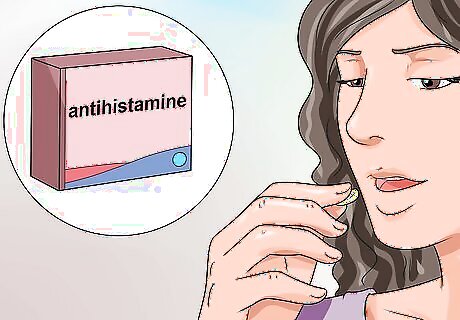
Try taking allergy medicine. For mild allergic conjunctivitis, an oral over-the-counter allergy medication may be enough to clear your symptoms within several hours to a few days. If it doesn't go away quickly, it's probably bacterial or viral. Try an antihistamine. The body reacts to allergens by producing chemicals called histamines, and these chemicals are the culprit behind pink eye and other allergy symptoms. An antihistamine reduces these levels or blocks the histamines completely, thereby stopping your symptoms. Use a decongestant. While decongestants do not stop the allergen from affecting you, they do control inflammation. In doing so, they can help prevent eye tissue from getting inflamed.
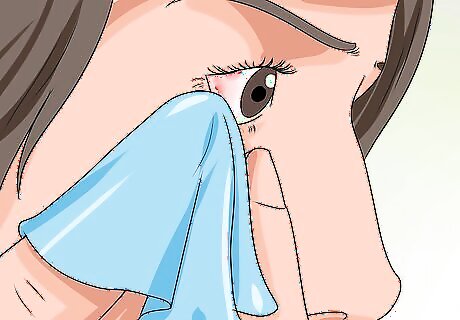
Clean the infected eye regularly. Whenever drainage begins to build in your eye, you need to wipe it away to prevent bacteria from festering. Wipe the eye starting at the inside corner, next to the nose. Gently pass over the entire eye toward the outside corner of the eye. This wipes the discharge away from your tear ducts and safely out of your eye. Wash your hands before and after cleaning your eyes. Use a clean surface for each wipe or pass to avoid getting discharge back in the eye. Immediately discard tissues or disposable eye wipes. Toss any washcloths into the laundry immediately after use.
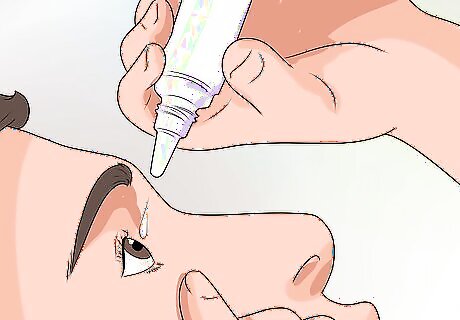
Apply over-the-counter eye drops. "Artificial tears" can relieve symptoms and flush the eye out. Most over-the-counter eye drops are mild saline lubricants designed to replace tears. They can soothe dryness associated with pink eye, and they can also wash the eye of contaminants that could complicate and prolong viral, bacterial, or allergic conjunctivitis. Some over-the-counter eye drops also contain antihistamines that are useful in treating allergic conjunctivitis.
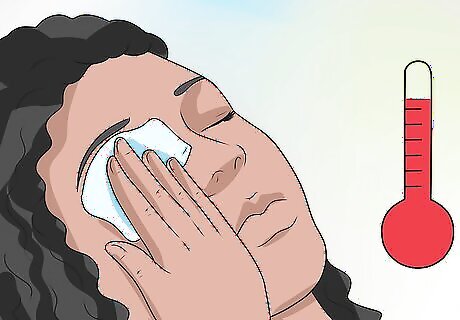
Use a cold or warm compress. Soak a soft, clean, lint-free cloth in water. Wring it out to remove excess water and apply it to closed eyes using gentle pressure. Cold compresses are usually best for allergic conjunctivitis, but warm compresses might feel better. Both warm and cold compresses reduce swelling in the event of viral or bacterial conjunctivitis. Note that compresses do increase the risk of spreading the infection from one eye to the other, so you should use a clean compress for each application and a different compress for each eye.
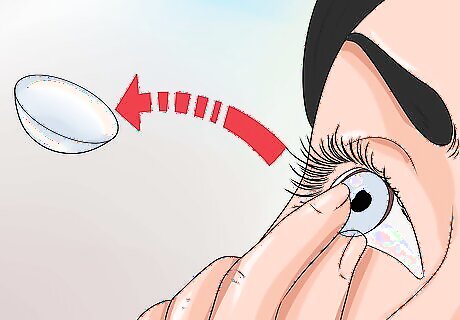
Remove your contacts. If you wear contacts, you should remove them for the duration of your pink eye. Contacts can irritate your eyes, causing further complications, and may trap bacteria causing bacterial conjunctivitis in your eye. Disposable contacts might need to be discarded if they were used at all while you had bacterial or viral conjunctivitis. Non-disposable contacts should be cleansed thoroughly before you reuse them.
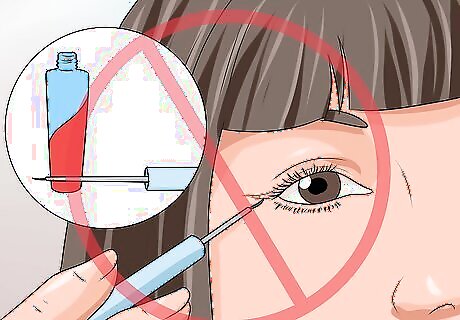
Prevent the condition from spreading. Viral and bacterial conjunctivitis are both contagious, and you can be reinfected after becoming well if the illness has spread to other members of your household. Do not touch your eyes with your hands. If you do touch your eyes or your face, wash your hands immediately afterward. Also, wash your hands after applying eye medication. Use a clean washcloth and towel every day. Change your pillowcases daily for the duration of the infection. Do not share any products that touch your eye. This includes eye drops, towels, linens, eye cosmetics, contacts, lens solutions or containers, or handkerchiefs. Do not use eye cosmetics until you get rid of the pink eye completely. Otherwise, you could reinfect yourself with those cosmetics. If any eye makeup was used when you had pink eye, discard it. Stay away from school or work for a few days. Most people with viral conjunctivitis can return after 3 to 5 days, once symptoms start to improve. Most people with bacterial conjunctivitis return after symptoms vanish or 24 hours after treating the symptoms with an antibiotic.
Getting Prescription Treatment
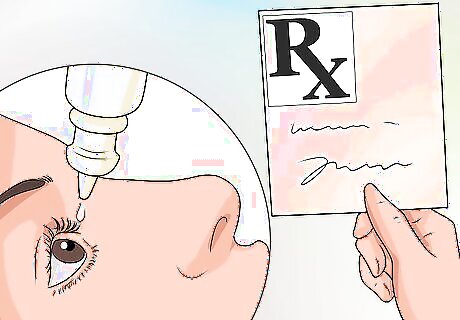
Use prescription eye drops. While over-the-counter eye drops are effective for many people suffering with pink eye, prescription eye drops are more powerful and may rid you of the illness sooner. Treat bacterial conjunctivitis with antibiotic eye drops. Antibiotic eye drops are a topical treatment that attacks the bacteria directly. They usually clear the infection within several days, but you should notice improvement after the first 24 hours. Follow your doctor's instructions concerning application. Treat allergic conjunctivitis with antihistamine or steroid eye drops. While some antihistamine eye drops can be purchased over-the-counter, stronger versions are available by prescription. Severe allergies are sometimes treated with eye drops containing steroids, as well.
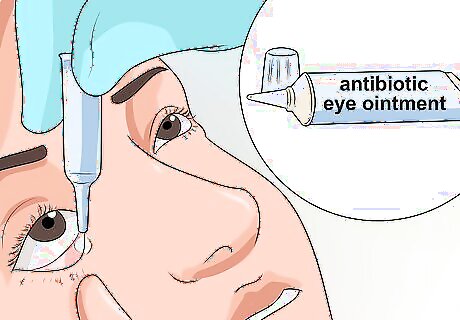
Try an antibiotic eye ointment. Antibiotic ointment is easier to apply than eye drops are, especially for children. Note the ointment blurs vision for 20 minutes after being applied, but the patient's vision should clear up after that time passes. Bacterial conjunctivitis should be gone after a few days with use of this treatment.
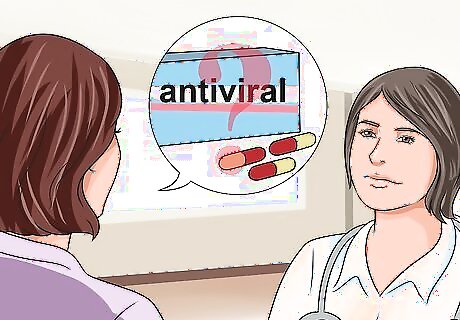
Ask about antiviral medications. If your doctor suspects that your viral conjunctivitis is caused by the herpes simplex virus, he may decide to put you on some form of antiviral medication. Antiviral medications may also be an option if you have certain preexisting health conditions that have weakened your immune system.













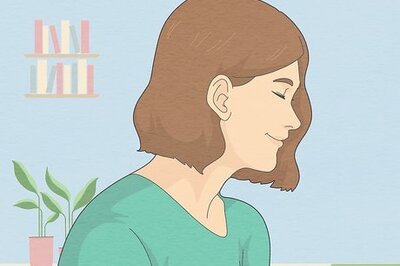





Comments
0 comment